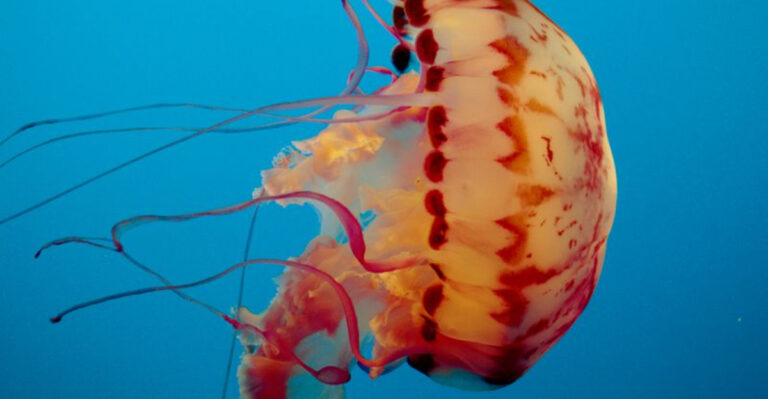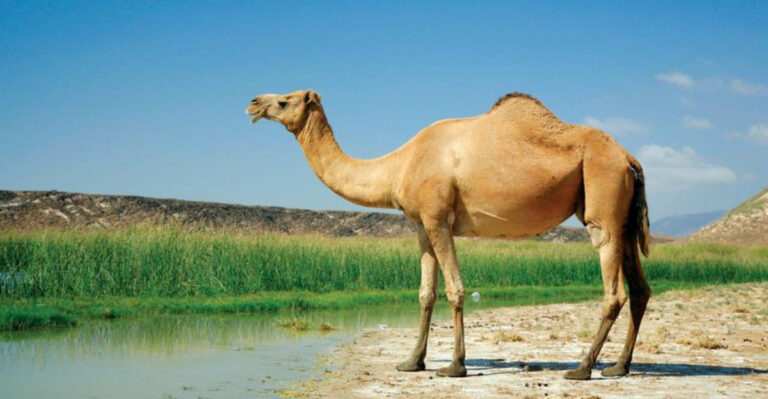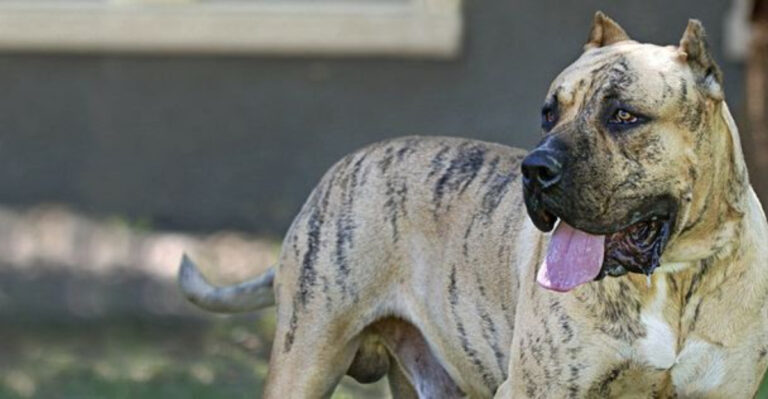14 Wild-Tempered Cats That Shouldn’t Be House Pets

Not all cats are made for cozy couches and feather toys. Some look like house cats but come with wild instincts and untamable energy.
These feline beauties might turn heads, but they’re better suited for the wild – or expert care far beyond the average pet owner. Think twice before trying to turn one of these wild-hearted cats into a lap companion!
1. Sand Cat
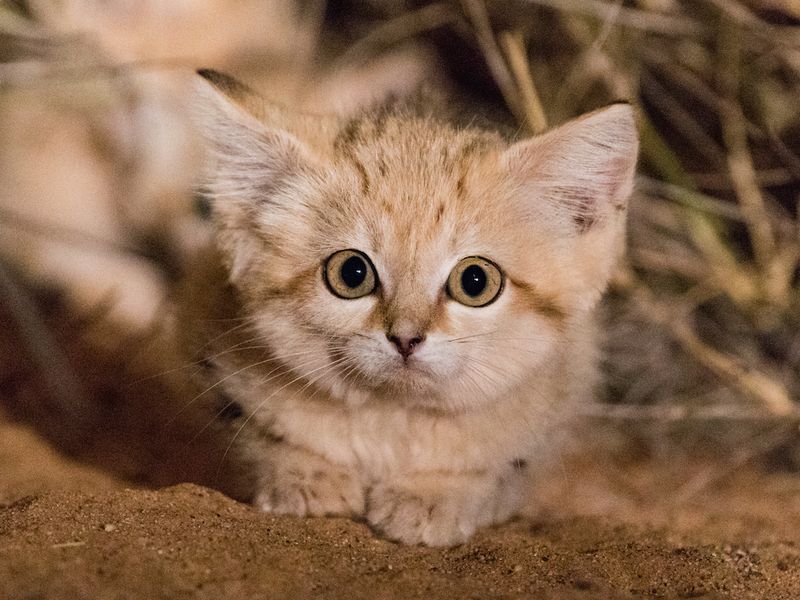
Amidst the arid deserts of North Africa and the Middle East, the Sand Cat boasts survival skills par excellence. This feline can withstand extreme temperatures, living where few others dare.
Its sandy-colored coat blends seamlessly with its barren surroundings, offering both protection and stealth. Known for its nocturnal lifestyle, it evades the desert heat, hunting small rodents and reptiles during cooler nights.
Despite its appealing appearance, the Sand Cat’s specialized adaptations to desert life and its solitary nature make it unsuitable for domestication, ensuring its role as a true wild cat.
2. Hybrid Leopard Cat Mixes
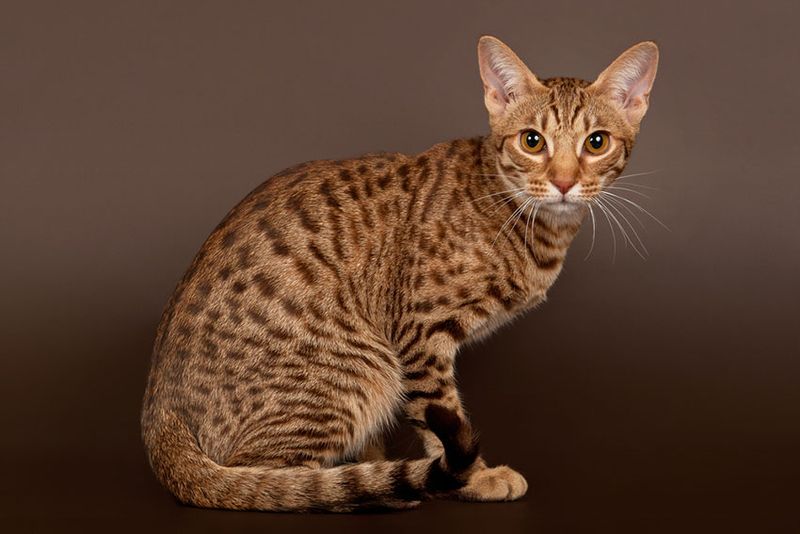
Hybrid Leopard Cat Mixes combine domestic charm with the wild instincts of Asian leopard cats. Their spotted coats are stunning, but they need space, stimulation, and freedom to roam.
Indoors, their climbing and hunting habits can be tough to handle. These adventurous cats are better suited to more open, enriched environments.
3. Jungle Cat Hybrids

Jungle Cat Hybrids are descendants of domestic cats and jungle cats, possessing a mix of domesticity and wildness. They have an athletic build and a coat that serves as camouflage in the wild.
Their wild instincts make them natural hunters, and they often bring their prey indoors, which can be unsettling for home owners. While their exotic appearance is captivating, their temperament and needs make them unsuitable as house pets.
4. Ocelot
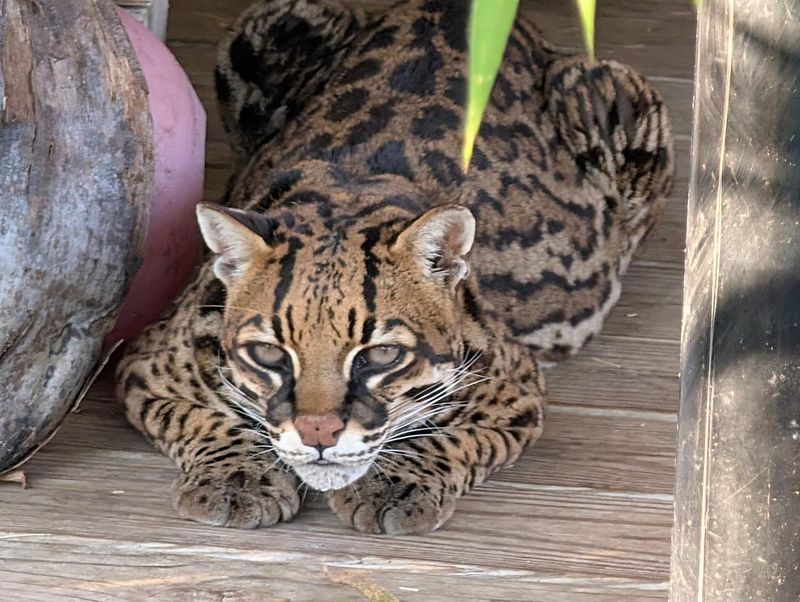
With mesmerizing coats of spots and stripes, these wild cats may look like exotic pets – but don’t be fooled. Native to the Americas, ocelots are agile, solitary hunters that need room to roam.
Their strong territorial instincts and independent nature make life in a house stressful and unnatural. Confined spaces can lead to frustration, making them unsuitable companions for typical home life.
5. Chausie
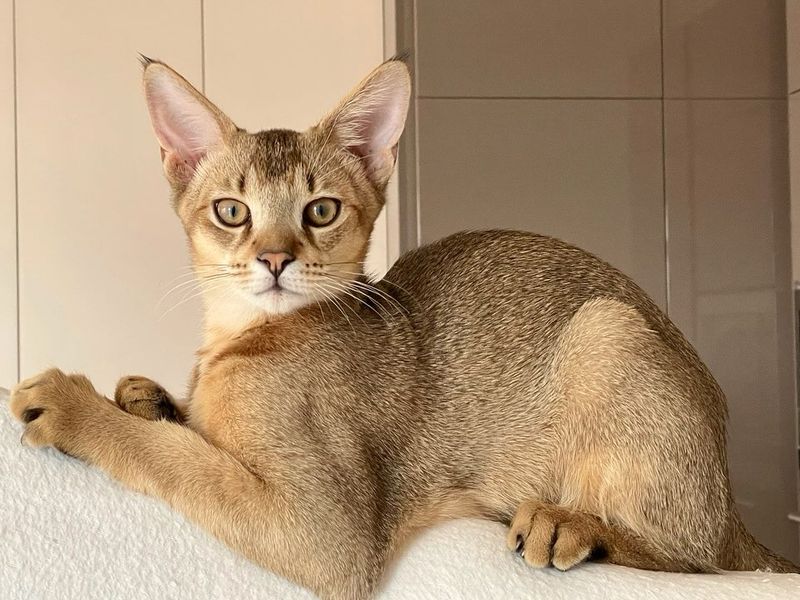
Born from a mix of domestic and jungle cats, Chausies have an exotic look and boundless energy. Their intelligence makes them curious and demanding, needing constant stimulation.
Without an enriched environment, boredom sets in fast. Despite their striking appearance, their high needs make them a tough fit for typical home life.
6. Bobcat
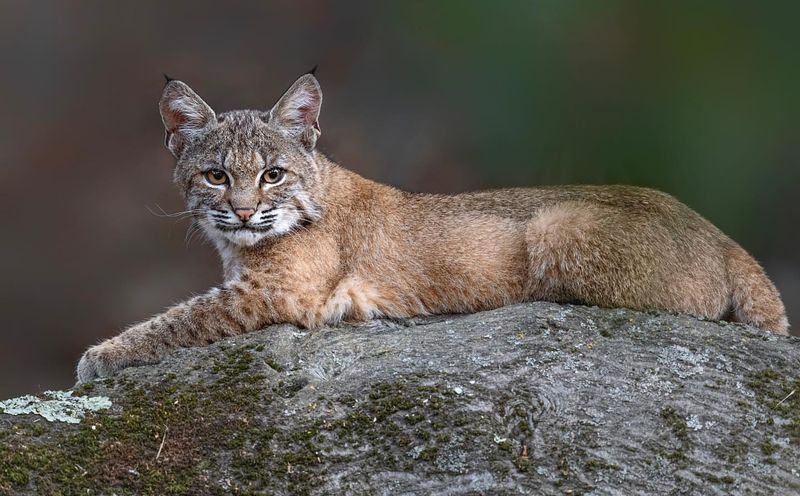
Bobcats are robust, medium-sized wild cats found across North America. Recognizable by their tufted ears and distinctive facial ruff, they are solitary and territorial creatures.
Their powerful instincts and need for freedom make them poor candidates for house pet roles. Bobcats can become aggressive if confined to small spaces, which doesn’t suit their natural behavior.
Despite their fascinating appearance, they thrive best in their wild environments where they can roam freely and hunt naturally.
7. Caracal Cat
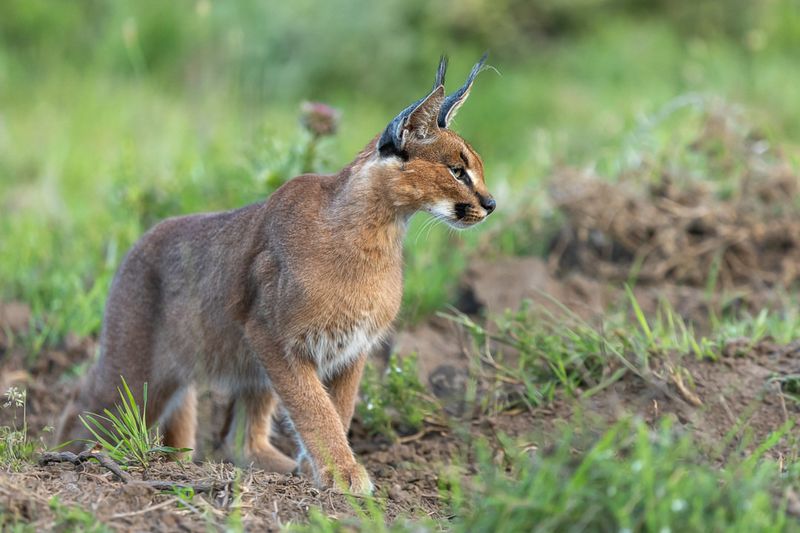
With striking ear tufts and a graceful build, these sleek cats are built for the wild. Caracals are powerful hunters, known for their incredible jumping ability and sharp instincts.
Their high energy and independence demand far more space and stimulation than most homes can offer. While undeniably beautiful, they’re best admired in the wild where they truly thrive.
8. Savannah Cat
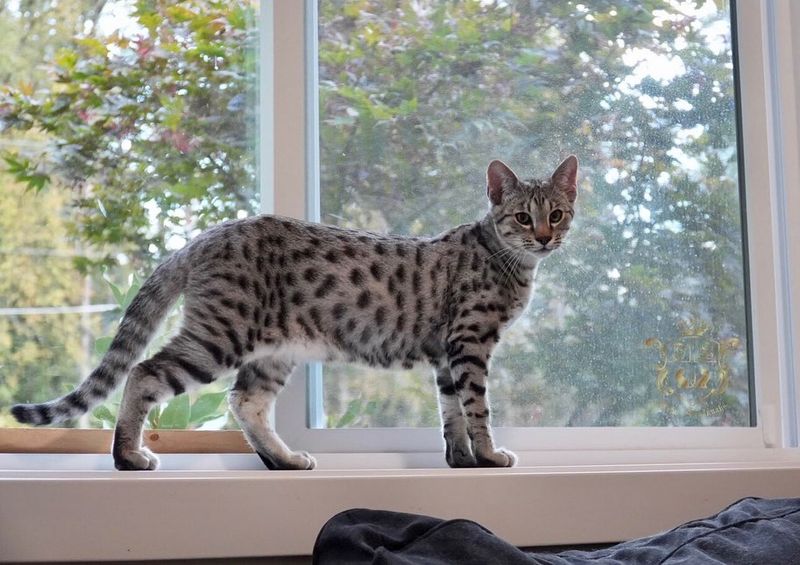
Savannah cats are a crossbreed between domestic cats and servals, boasting tall, slender bodies and bold markings. They are active and curious, needing plenty of space and interaction to thrive.
These cats enjoy exploring and can become bored in confined spaces, leading to mischievous behavior. Their wild ancestry means they have high energy levels and require more engagement than typical house cats.
9. Serval
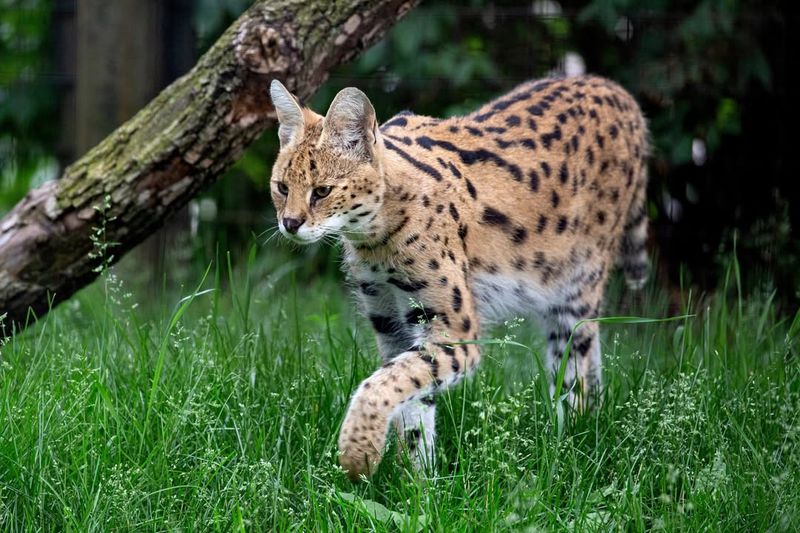
Servals are medium-sized African wild cats, easily recognized by their long legs and large ears. These cats are highly skilled hunters, with a preference for open habitats where they can pounce on prey.
Their wild nature makes them unsuitable as house pets, as they require large territories to roam and hunt.
They thrive in environments where they can express their natural behaviors and are best admired from afar in their natural settings.
10. Bengal Cat
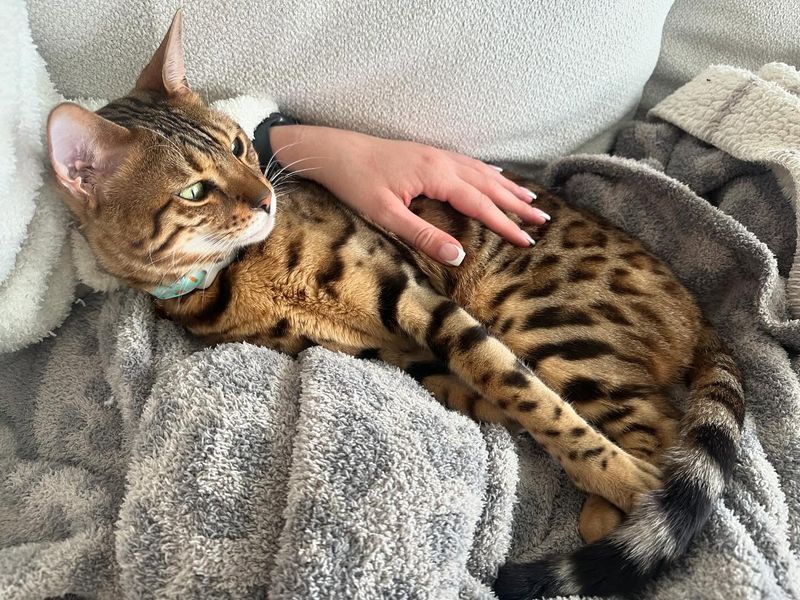
Bengal cats, with their leopard-like appearance, are a blend of domestic cats and Asian leopard cats. Their striking spots and playful nature make them a popular breed among cat enthusiasts.
Their high energy levels and need for stimulation can be challenging in a home setting. These cats thrive on activity and exploration, making them unsuitable for sedentary lifestyles.
Bengals are best suited for owners who can provide plenty of interactive play and space for them to roam.
11. Lynx
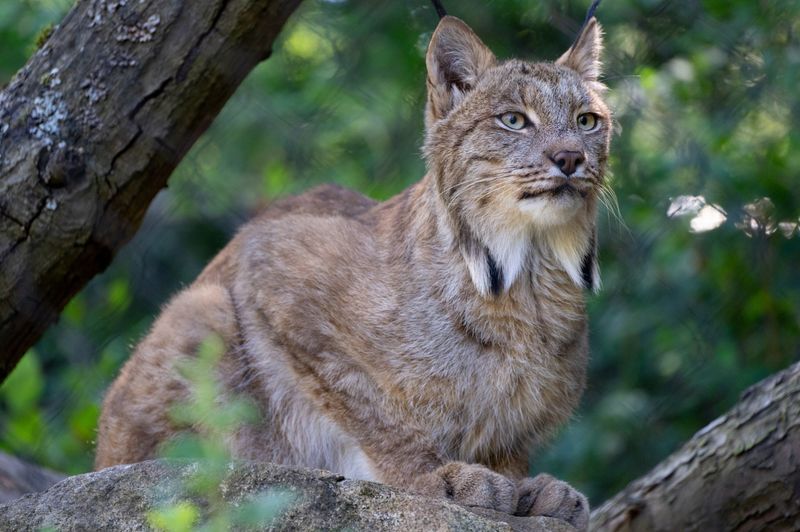
Thick fur, tufted ears, and a stealthy nature make this wild cat a master of snowy forests. Lynxes are solitary hunters that roam vast territories, relying on their instincts to survive.
Living in confinement goes against everything in their nature and can cause stress or aggression. These majestic creatures belong in the wild, not curled up on a couch.
12. Margay
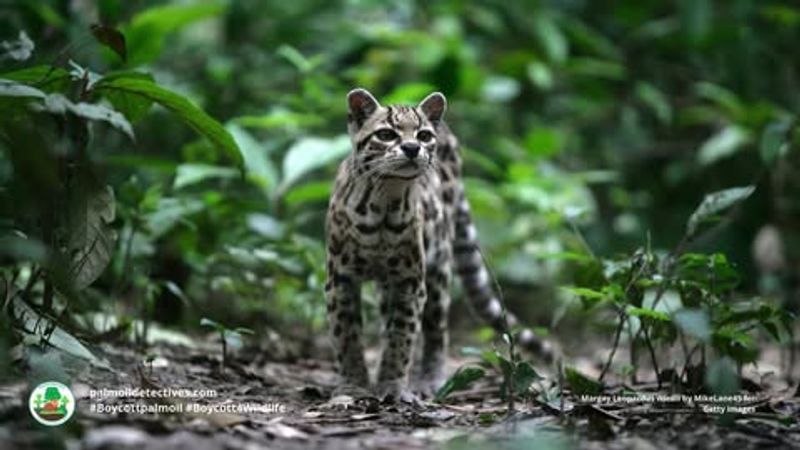
Margays are small, wild cats native to Central and South America, known for their ability to climb and leap through the trees with ease. Their spotted coats provide perfect camouflage in the lush rainforests.
These nocturnal hunters require large, forested territories to thrive, making them unsuitable for confined living. Their arboreal nature and need for space present challenges for domestic life.
While margays are fascinating to observe, their place remains in the wild, where they can exhibit their natural climbing and hunting behaviors without constraints.
13. Geoffroy’s Cat
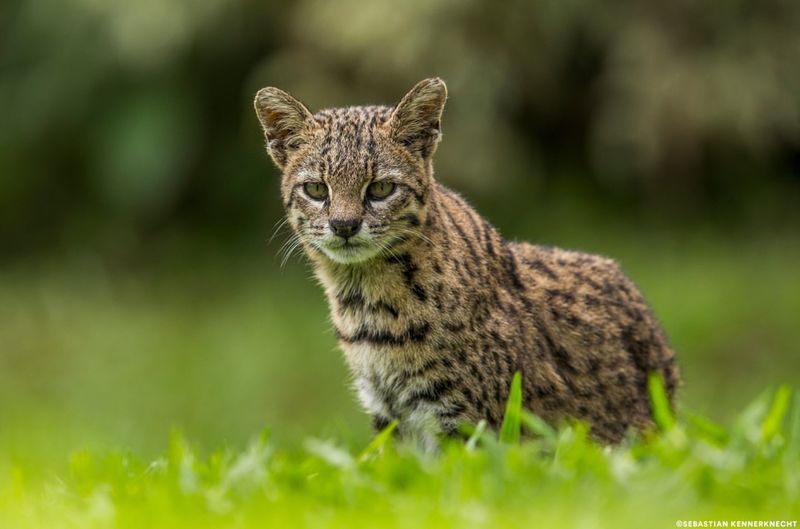
With a sleek, spotted coat and sharp hunting skills, this small South American wild cat thrives in open spaces and dense forests alike. Geoffroy’s cats are solitary and highly territorial, making domestic life a poor fit for their instincts.
They need room to roam and act on their natural behaviors, not the limits of a living room. In the wild, they flourish – at home, they struggle.
14. Fishing Cat
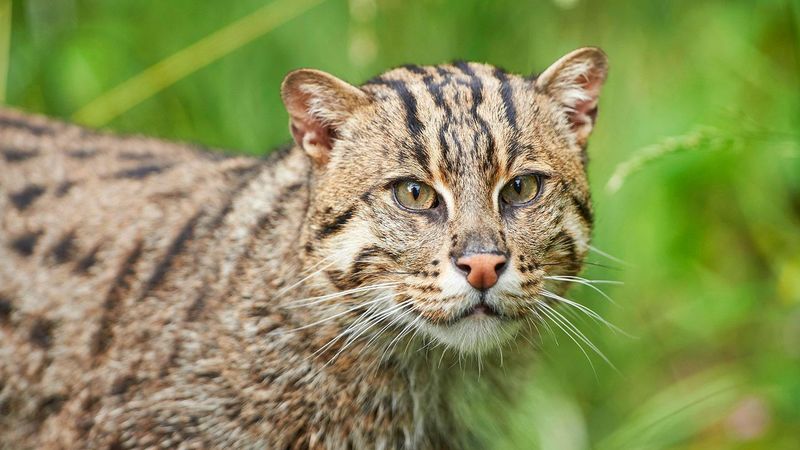
In the lush wetlands of South and Southeast Asia, the Fishing Cat prowls quietly. With webbed feet and a unique love for water, this feline is an adept swimmer and hunter of fish. It thrives in its swampy environment, reflecting its wild essence.
Living close to small rivers and streams, the Fishing Cat’s diet primarily consists of fish, a rarity among other cats. Its sleek, spotted coat provides perfect camouflage against the tall grasses.
This wild cat’s need for vast territories and aquatic habitats makes it ill-suited for life as a pet, despite its fascinating traits.

